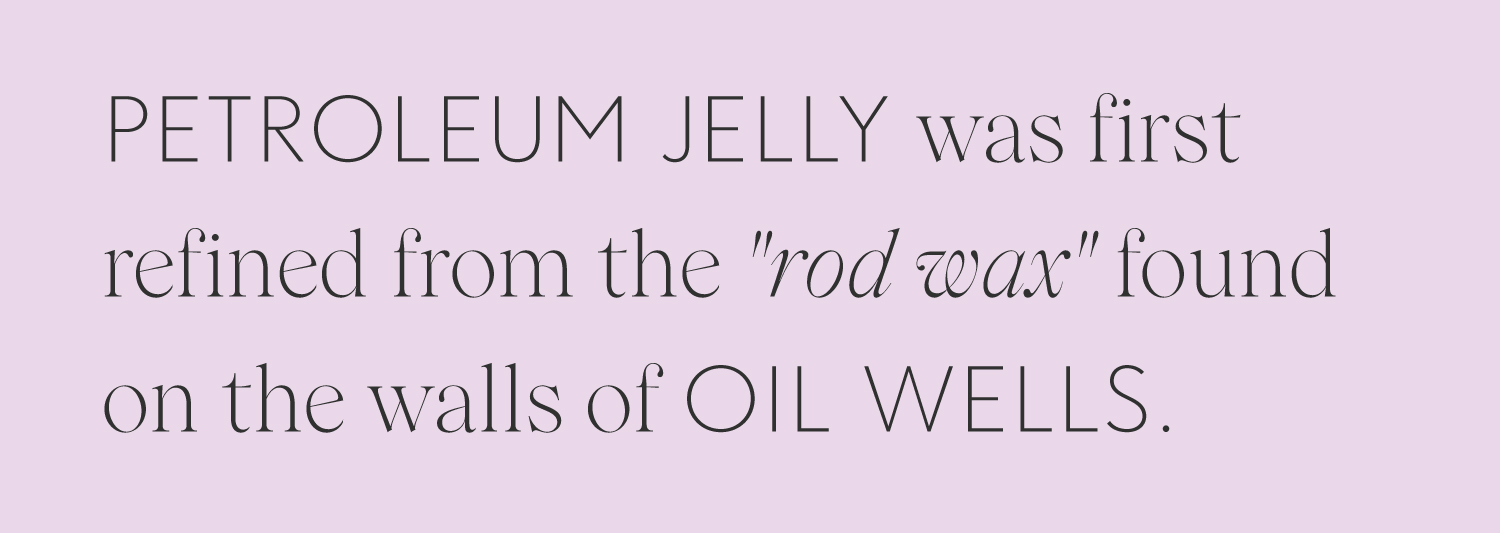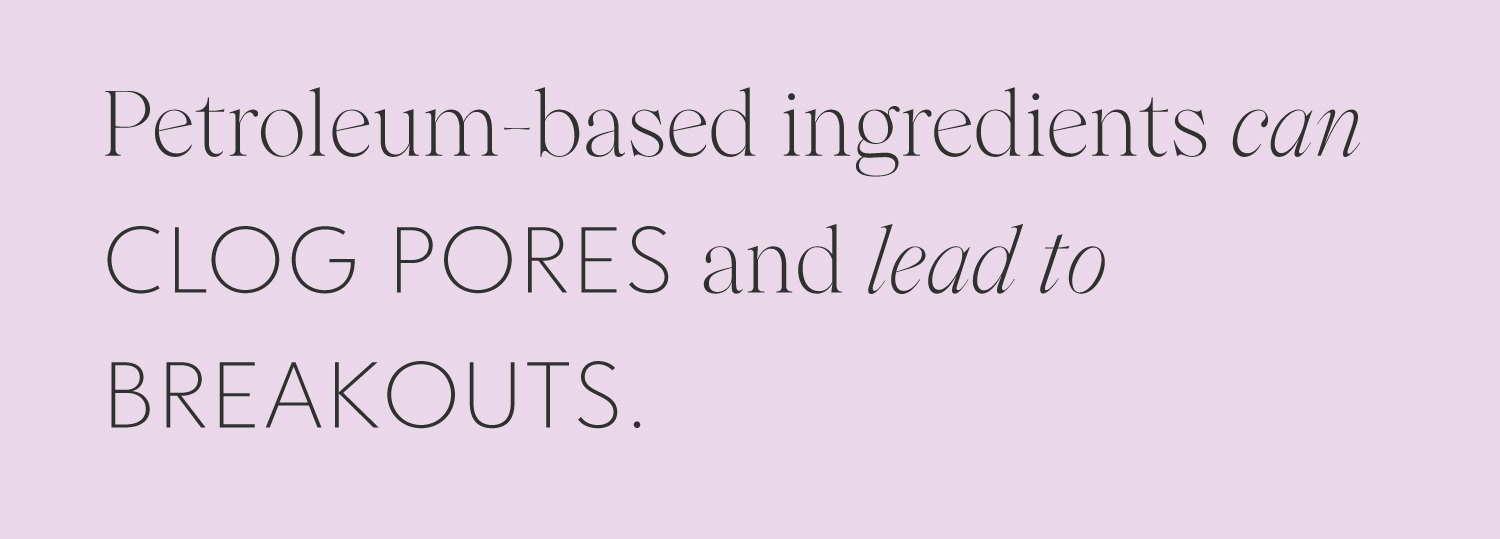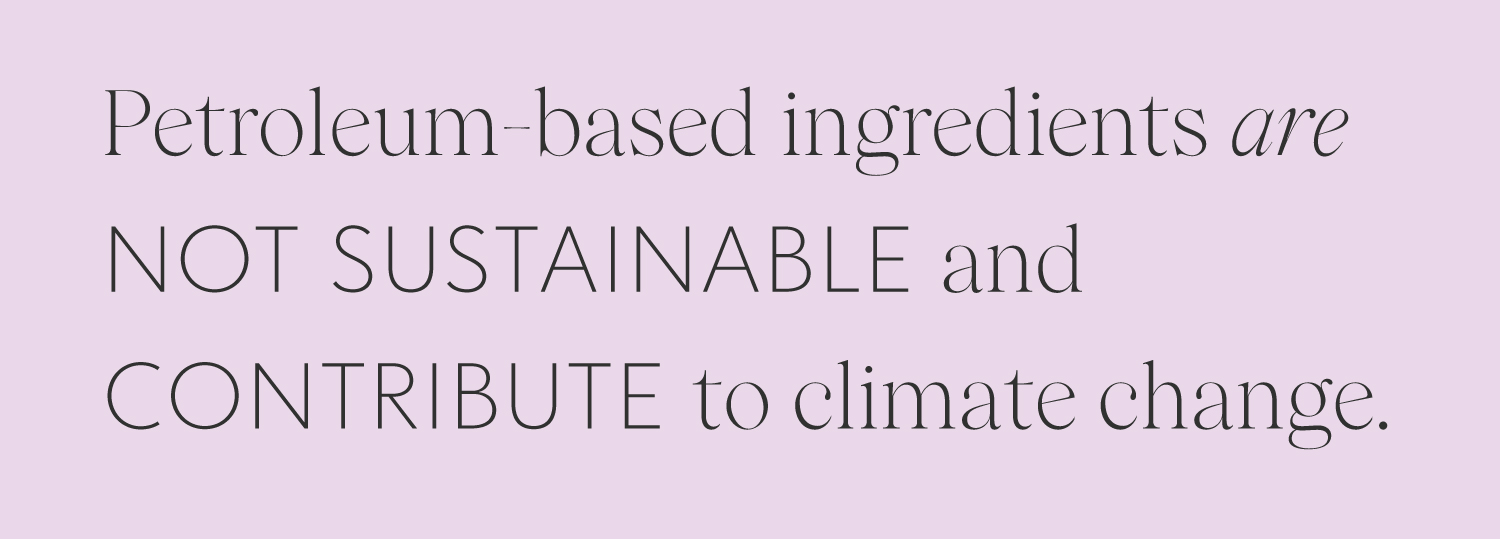Welcome to thoughtful, organic beauty
Hello Joyous is an organic, plant-based, sustainable beauty brand here to bring more joy to your day.
Last week I shared an in-depth look at the use of synthetic fragrances in beauty products and why they’re best avoided for joyous health. I am continuing this series with a post all about petroleum-based ingredients commonly used in beauty products so that you can be educated and empowered to make the best choices for your health from head to toe.
Petroleum-based ingredients are a staple in many beauty and personal care products, from shampoos to moisturizers, but that doesn’t make them the best choice for your skin health. As I mentioned last week, The American Journal of Public health found that the skin can absorb between 64% and 100% of the chemicals in your skincare product. The amount that gets absorbed depends on several factors including: the size of the molecule, whether you have any broken skin, or if your skin barrier function is compromised due to conditions such as acne, eczema, and rosacea.
Just like synthetic fragrances, petroleum-based ingredients have health impacts that aren’t always well-known or shared by the manufacturers and companies who use them. The other problem is they are not well-studied, no different than the thousands of other chemicals used in personal care products. There is a lack of data and information much of the time. Chemicals are not researched to prove they are safe and since the cosmetics industry is unregulated, they can choose what they believe is best for your skin regardless of potential side effects or harm. That’s why we’re going to take a closer look at these ingredients so you can be well-informed on the products that are best for your skin and the planet.
Below, I’ll outline everything you need to know about petroleum-based ingredients including what they are, how they’re used, possible negative health impacts, and the body-loving swaps that are also kind to the planet so you can clean your beauty routine!
What Are Petroleum-Based Ingredients?
Petroleum-based ingredients, specifically petroleum jelly (or petrolatum–think Vaseline!) have been recommended by doctors as moisturizers and skin protectors since the late 19th century. Back in the 1870s oil workers used to slather an unrefined petroleum product called “rod wax” on their bodies to heal wounded or burnt skin. Upon discovering this usage, a chemist named Robert Chesebrough decided to refine the gel that was found on the walls of oil wells to create petrolatum, YUCK!
These ingredients are refined from crude oil, which is not only a non-renewable resource, but isn’t the best choice to apply to your skin. You can find petroleum-based ingredients in many beauty products because they are cheap and easy to source. However, slathering your skin in petrochemical byproducts isn’t necessarily the best way to get a gorgeous glow, especially when there are many healthier and more sustainable options.

How Are They Used In Beauty Products?
Thanks to the widespread availability and affordable cost of petroleum-based ingredients, they are incredibly common in beauty products ranging from anti-aging creams to moisturizers to shampoos, conditioners, lip balms, and makeup. You’ll even find them in supposedly high end brands. Manufacturers love them because they believe they’re a cheaper way to moisturize and hydrate the skin, but they don’t do either of these things.
What they actually do is create a waterproof, or occlusive, barrier on the skin that doesn’t let it breathe and can possibly trap impurities. Some people find it leads to breakouts, especially if they’re prone to acne, as it suffocates the skin and clogs the pores in addition to impacting the skin microbiome [link here]. While petrolatum does lock in moisture, it doesn’t allow the skin to absorb moisture from the environment, which makes it less hydrating than products that use emollients (soothers and softeners), such as cocoa and shea butters.
Another common use of Vaseline that has always baffled me is as a moisturizer for ultra delicate infant skin, especially in products for babies with eczema. As we’ll see below, products made with petroleum-based ingredients can cause irritation, clog pores, and even suffocate the skin. In fact, a study published in Pediatrics found that using topical petrolatum on low birth weight infants increased their risk of developing systemic candidiasis, possibly by creating a warm, damp environment for the yeast to flourish. Using these chemicals on delicate baby skin seems totally unnecessary to me since there are so many amazing natural alternatives like sunflower oil or our super gentle Body Butter–it’s the only product I used on Vienna when she was a baby!
It’s important to remember that even high end products or brands that claim to be natural can still use petroleum-based ingredients simply because they are cheaper to source, which means a better bottom line. Make sure to read your labels, especially if you have sensitive or acne prone skin, so that you can avoid these chemicals. I'll share the names to look out for below so that you can become a savvy shopper.
Why Are They Harmful?
Far from being a beauty booster, petroleum-based ingredients can have negative effects on the skin and overall health. The David Suzuki Foundation lists petrolatum as one of its Dirty Dozen Cosmetic Chemicals to Avoid because it can be contaminated with polycyclic aromatic hydrocarbons (PAHs). Researchers have found a correlation between exposure to these substances, including skin contact, and various types of cancers, including lung, skin, and bladder. In fact, the European Union classifies petrolatum as a carcinogen and restricts how it can be used in cosmetics.
In addition to PAHs, petroleum-based ingredients have other negative health effects, especially when it comes to the skin. These chemicals:
And we can’t forget that phthalates are also derived from petroleum-based ingredients! I shared all the negative effects in my post about synthetic fragrances, but the short version includes hormonal disruption in men and women including early puberty development in young girls and lowered sperm counts in men.
With so many proven natural ingredients that can soothe and protect the skin, there’s no need to rely on beauty products that are loaded with petroleum-based ingredients. Just say no to petrochemicals - your skin will thank you!

What To Look For on Labels
Being educated on the different names for petroleum-based ingredients can ensure that you’re purchasing products that are healthy for your body and the planet. Some of the most common names you’ll see on products include:
By taking a few moments to check your labels you’ll be able to see whether your favourite beauty brands are clean and safe or possibly loaded with petrochemicals for a not so joyous beauty routine. Luckily, as consumers become more educated and aware of the health effects of these ingredients, companies are starting to formulate products that are pure and natural.

Non-Toxic Skin-Nourishing Alternatives
If you want to avoid beauty products loaded with petrochemicals and skin-irritating ingredients, it’s best to turn to nature to help support your skin barrier function, balance your pH, and hydrate your skin. Below I’ll share some of my favourite natural products that soothe and protect even the most sensitive skin.
I hope this post has opened your eyes to the prevalence of petroleum-based ingredients in beauty products and why you want to avoid them. Luckily, there are tons of amazing plant-powered ingredients that can nourish and protect your skin, naturally. To get started, explore Shop Joyous Health to find all-natural, plant-powered skincare, hair care, and body care products!
Thank you so much Joy. We all need to be more informed if we care about our health!
ReplyThanks for the comment Irene!